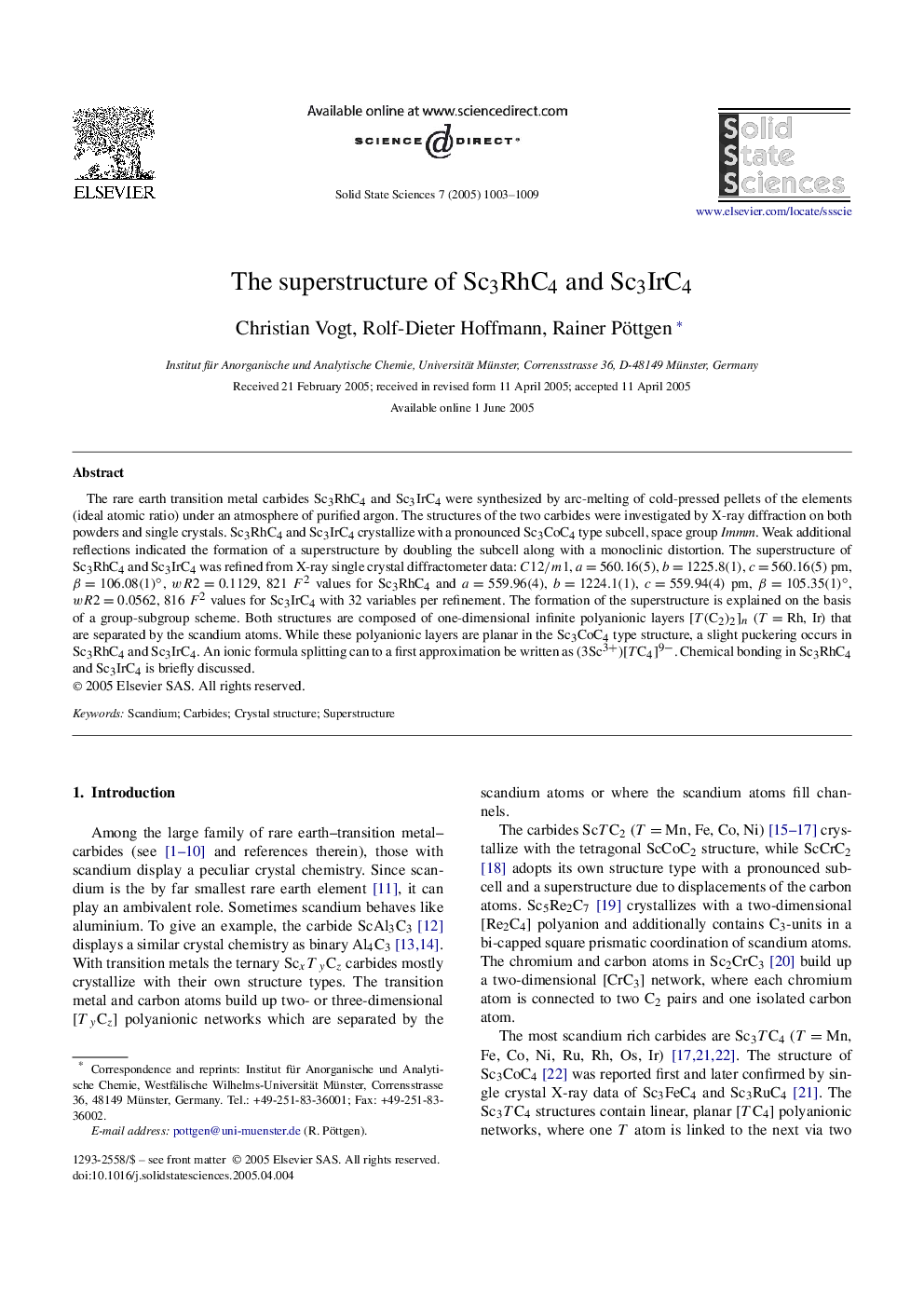| Article ID | Journal | Published Year | Pages | File Type |
|---|---|---|---|---|
| 10636766 | Solid State Sciences | 2005 | 7 Pages |
Abstract
The rare earth transition metal carbides Sc3RhC4 and Sc3IrC4 were synthesized by arc-melting of cold-pressed pellets of the elements (ideal atomic ratio) under an atmosphere of purified argon. The structures of the two carbides were investigated by X-ray diffraction on both powders and single crystals. Sc3RhC4 and Sc3IrC4 crystallize with a pronounced Sc3CoC4 type subcell, space group Immm. Weak additional reflections indicated the formation of a superstructure by doubling the subcell along with a monoclinic distortion. The superstructure of Sc3RhC4 and Sc3IrC4 was refined from X-ray single crystal diffractometer data: C12/m1, a=560.16(5), b=1225.8(1), c=560.16(5)pm, β=106.08(1)°, wR2=0.1129, 821 F2 values for Sc3RhC4 and a=559.96(4), b=1224.1(1), c=559.94(4)pm, β=105.35(1)°, wR2=0.0562, 816 F2 values for Sc3IrC4 with 32 variables per refinement. The formation of the superstructure is explained on the basis of a group-subgroup scheme. Both structures are composed of one-dimensional infinite polyanionic layers [T(C2)2]n (T=Rh, Ir) that are separated by the scandium atoms. While these polyanionic layers are planar in the Sc3CoC4 type structure, a slight puckering occurs in Sc3RhC4 and Sc3IrC4. An ionic formula splitting can to a first approximation be written as (3Sc3+)[TC4]9â. Chemical bonding in Sc3RhC4 and Sc3IrC4 is briefly discussed.
Related Topics
Physical Sciences and Engineering
Materials Science
Ceramics and Composites
Authors
Christian Vogt, Rolf-Dieter Hoffmann, Rainer Pöttgen,
